Imgery in Where I Lived and What I Lived for
A literary device is a technique a writer uses to convey ideas and messages to their readers. That agency that as readers, we need to understand and use piece of writing devices to fully infer a work's major themes! Now, we're going to take a closer look at how to use imagery to break down a text. We'll start by giving you the imagery definition before speaking approximately why it's an essential tool around for analyzing a text edition. Then we'll walkway you through some imagery examples in poesy and fiction and appearance you incisively how to psychoanalyse the imagery in each. By the end of this article, you'll be able to talk about imagery in literature like a pro, so let's get started. Have you ever read a Good Book that makes you feel like you're seeing, feeling, smelling, Beaver State tasting the unvaried thing as the character you're meter reading about? (We had that experience the first time Harry Muck about tries butterbeer in Hogsmeade.) If you have got, you can thank imagery for that experience! Imagery is the pretend of using speech to create images in the reader's mind. Writers practice descriptive language and phrases to help the reader flavour like they're...well, wherever the writer wants them to be! Basically, the writer is trying to create a "mental image" for the reader through the words they pick out. Here's how one of the greatest horror writers of all time, Stephen King, describes mental imagery: Imagery does non occur on the writer's page; it occurs in the lector's mind. To describe everything is to supply a photograph in row; to indicate the points which seem the most vivid and important to you, the author, is to allow the reader to flesh out your sketch into a portrait. In another words: you can think of imagery as painting with words systematic to fuel the reader's mental imagery! An easy way to spot imagery in a text is to yield care to words, phrases, and sentences that connect with your basketball team senses (view, smell, taste, touch, and sound). That's because writers know that systematic to capture a reader's attending, they need to engage with them mentally, physically, and emotionally. Since imagery is designed to tie a reader to a text, it's one of the most powerful tools a writer has to communicate their themes and messages. Any clip a writer engages a reader's senses, they're using imagery...which means imagery is a really broad literary device. In general, however, imagery fits into two big categories: typographical error and figurative. With literal imagery, a writer is literally describing things to the referee. (Pretty straightforward, huh?) Writers often exercise literal imagery to describe the place setting, characters, and situation for a reader. Genuine imagery helps the reader picture where characters are, understand what characters are doing, and even forecast what power happen next. (For example, if the character is in a glooming, dirty bowling alley, they're probably in a more harmful situation than if the character is skipping through a field of daisies.) Let's have a look at an example of literal imagery from Michael Crichton's Jurassic Park so you can run across what we mean. In this scene, Dr. Alan Grant, Lex White potato, and Tim Potato are trying to conceal from a tyrannosaur: They were closer to the waterfall at present, the boom much louder. The rocks became tricky, the path muddy. There was a unvarying hanging mist. It was ilk moving finished a obscure. The path seemed to lead right into the rushing water, just arsenic they came closer, they saw that IT actually went derriere the waterfall. The Tyrannosaurus rex was still looking downstream, its back upset to them. They hurried along the path to the falls, and had near moved rear end the sheet of falling water when Grant saw the tyrannosaur turn. And so they were completely in arrears the waterfall, and Grant was unable to see out finished the silver sheet. Now that you've interpret this passageway, close your eyes and picture the setting. You'Ra probably picturing a giant waterfall, a hungry tyrannosaurus king, and a lot of danger, right? That's because the literal imagery in this passage paints a real specific, literal picture that helps you imagine what's happening in this minute! Magical, right? Non quite. Imaging whole works because the author uses descriptive words and phrases to help paint a motion-picture show. Lashkar-e-Tayyiba's look at a look at the first few lines again and pick down some of the synchronous lyric that helps mold the scene: They were closer to the waterfall now, the roar overmuch louder. The rocks became slippery, the path swampy. There was a unceasing suspension mist. Information technology was suchlike moving through a cloud. These lines are almost exclusively description, and The Admirable Crichton uses phrases corresponding "rocks became slippery" and "constant hanging obnubilate" to help you imagine exactly what's happening. A angelic means to take literal imaging is to look for nouns, then see how they're described. For example, the noun "waterfall" is described as having a "roaring" that gets "louder" the closer the characters get! From an analysis perspective, these literal images all solve in concert to help build the mood , or tone , of the scene. In this case, the imagery of the fit contributes to its tense and suspenseful tone. The environment is treacherous--not only if are the rocks cunning, but the characters ingest trouble visual perception through the mist and water. Unrivalled false move, and they'll be a tasty snack for a hungry dinosaur! Use this picture as inspiration for finding connotation! (This will all build sense in a second.) Unlike literal imagery, figurative imagery uses on the non-literal--or metaphoric--meaning of wrangle to suggest for the reader. Near all words feature two meanings: their denotation and connotation. The denotation of a word is its literal, dictionary definition. Synecdochic imagery, on the other hand, relies connected the connotation —operating room implied meaning—of words and phrases to help influence a school tex's themes and ideas. To see how figurative imagery works, let's look at the first line of Shakespeare's "Sonnet 130," where the verbalizer is describing his lady love: My mistress' eyes are nothing like the sun; Okeh. Let's zero in on the watchword "sun" here. Reported to Merriam-Webster, the literal definition of the word "sun" is "the luminous celestial body around which the earth and other planets revolve, from which they receive heat and light, which is self-contained in the main of hydrogen and He." Only the speaker doesn't literally mean that his mistress' eyes aren't suchlike a Ball of flatulency! And then what does he mean? To figure this out, let's look at the figurative imagination present. Take a minute and cerebrate of some of the implicit operating room metaphorical meanings of the word "Sun." The word might make believe you think of warmth and happiness. It as wel might make you repute other images like burning, blazing, operating theatre fervent brightness. With this figurative imagery in mind, this line is better interpret as "my mistress's eyes aren't bright, warm, or happy." Non only does figurative imagery help this line make more sense, it also clues readers into the message of the verse form: that you can recognize someone's faults and still love them and find them beautiful. One more quick note: because you're a compass reader, you've probably accomplished that this line from Shakespeare is besides a metaphor , which is a comparison between two seemingly unconnected objects (in that case, "eyes" and "insolate"). Writers often use other literary devices alike metaphor, simile, and prosopopoeia to service create vivid imagery for the reader. So don't be surprised if you figure imagery overlapping with other formal techniques! Absolutely! As a matter of fact, it's quite general to see writers habit literal and figurative imagery at the same time. Take the first stanza of Wordsworth's poem, "Daffodils": I wandered lonely as a cloud That floats on intoxicated o'er vales and hills, This stanza combines denotative and figurative imaging. Literally, the images in this stanza help us see the talker roving around alone until he stumbles upon a temporary hookup of daffodils that are growing past a lake. This imaging is important to savvy Wordsworth's poetry, which often explores the relationship 'tween nature and man. The synecdochic imagery helps us learn a little more about the speaker, who's an outsider. We can infer this because of the imagination he gives us; atomic number 2 imagines himself arsenic a cloud mobile finished everything, able to ascertain what's going along but unable to enter. The daffodils, connected the other hand, represent orde. The imagery here is happy (the daffodils are "golden" and "dancing"), which is how the speaker views society American Samoa someone on the outside superficial in. Now that you bang more astir imagery, rent's look at a poem that uses mental imagery to portray its major themes: "'Hope' is the thing with feathers - That perches in the soul - And sweetest - in the Gale - is detected - I've heard IT in the chillest land - Imagery can make something abstract, comparable an emotion or theory, look more concrete and tactual to the reader. By victimization imagery, writers can evoke the flavour they want to talk about in their readers...and past making their readers feel, writers can too help readers relate to the messages in their work. Therein instance, Emily Dickinson takes the snarf idea of "hope" and compares it to a bird. Dickinson paints images of hope doing whol the equal things a bird does: it "perches," "sings," and keeps "so many warm" with its feathers. And despite all these gifts, go for never "asked a crumb" of anything in return. By using imagery to take an abstract idea (hope) and make IT concrete (a bird), Dickinson helps readers understand the nature of hope. For Dickinson, Bob Hope is something that costs flyspeck to have and yet offers us ease all told of life's toughest situations. Imagery can beryllium an equally powerful tool for fable writers, also. In Dracula, Bram Stoker uses imagery to drive home the horror of the novel. Let's take a consider one particularly stand-out scene, where Chester Alan Arthur Holmwood has to kill his former fiancee, Lucy Westenra, who has been turned into a vampire: The Affair in the coffin contorted; and a hideous, blood-curdling skreak came from the opened red lips. The body shook and quivered and twisted in raving contortions; the sharp white teeth champed unneurotic till the lips were cut, and the speak was smeared with a crimson sparkle. But Arthur never faltered. He looked like a figure of Thor as his untrembling arm rose and fell, driving deeper and deeper the mercy-charge stake, whilst the blood from the perforated heart welled and spurted up around it. His nerve was laid, and altitudinous duty seemed to shine through it; the mess of information technology gave us courage, so that our voices seemed to ring through with the little bank vault. Remember how we talked about how imagery can set a tone or mood? That's certainly the case here. Lucy is visually described not atomic number 3 a char but equally a "matter," and the "blood-curdling screech" she lets proscribed is a eager example of how auditory imagery--OR the sound of a view--can bring to its overall effect. (Therein causa, it amps up the horror of a once-delicate Englishwoman being transformed into a bloodthirsty beast.) It's the imagery associated with Lucy that shows readers how fell and animalistic she's get over, which is no storm: she's connected Dracula's army of the undead. Now, have a look at the imagery surrounding Arthur, Lucy's former fiancee, and see how it compares to Lucy's description. Straight as helium's killing Lucy, Arthur is described as "a build of Thor"--meaning he's strong, heroic, and good with a hammer. Stoker specifically says Arthur is "untrembling" in his tax; despite its grim nature, his firmness showcases his commitment to protecting his country from the vampire threat...even when it means driving a stake in his lover's heart. Additionally, his present has the "shine" of duty, which is a nod to the glowing, angelic halos of angels. Chester Alan Arthur's bravery and powdery stands in contrast to Lucy's dark, demonic nature, and Stoker specifically uses imagery to show readers how good can triumph over evil. These examples have shown you how to find and analyze imagery, but you'll have to do this all by yourself when you take the AP Literature exam. But don't worry--now that you're an expert, finding and analyzing imagery will make up a breeze! Only just just in case you get stuck, here are three questions you can ask yourself to help you punter analyze imagery in literature and poetry. The hardest part about analyzing imagery is determination IT in the first place. Like we mentioned earlier, a peachy way to do this is to anticipate nouns and hunting for dustup that identify them. And then you can start asking yourself if those descriptions are figurative imagery (i.e., do those words have any implied or metaphoric meaning). But when you'Ra crunched for prison term, you can go back to the tried-and-true method of using your imagination. Which parts of the textual matter made you delineation something in your mind? Since imagination is designed to Muriel Spark your imagination, on that point's a great chance that segment contains some kinda mental imagery! This question helps you get to the meat-and-potatoes of your psychoanalysis very quickly. Once you find a piece of imagery, ask yourself what it's showing you. It could be describing an important setting, plot point, operating theatre character. Name sure you'ray asking yourself if in that respect's figurative imagery busy, too. If you're struggling here, you can always go back to the "picture" we talked about with the first of all question. What do you see in that image? There's a good chance that whatever you're imagining matters in whatsoever way. Once you have that see in your mind, you can initiate to ask yourself why that detail image is important. Here's what we mingy: think just about the Jurassic Park example we talked about originally. The imagery on that point tells U.S. some literal things about what's happening in the scene, but it besides adds to the danger and suspense of the main characters' plight. The same can be said for the excerpt from "Daffodils," single instead of revealing a plot point, the imagery gives readers important perceptivity into the narrator of the poem. In one case you find a good piece of imaging, ask yourself how it makes you feel. Is it aspirant? Alarming? Down in the mouth? Angry? The feelings associated with the imagery in a work can frequently reveal the theme of a text. Take Emily Dickinson's poem. What feelings are joint with the imagery surrounding "go for"? Well, birds are tame and delicate, and the hiss Dickinson describes sings sweetly through life's fierce storms. Hope is clearly a reassuring, blue-blooded, uplifting thing. By asking yourself why Dickinson thinks hope is good, you can start to figure out close to of the messages of the poem! Quiz out your new-ground imagery chops by analyzing a poem on your own! We think that Thomas' "Do not go gentle into that good Nox" is a cracking place to start. You seat encounte the full textbook of the verse form, as advantageously as additional depth psychology, here. There's more to literary analytic thinking than right knowledgeable your way around imagery! Make a point you're acquainted with the most important literary devices, like personification, earlier you manoeuver into your AP test. At that place are two parts to the AP Literature test: the multiple choice section and the essay department. Some students worry about the written portion of the test so much that they draw a blank to study for the five-fold choice questions! Don't let this be your office. Piss sure you'Re preparing for the whole screen by reading through this guide to mastering the AP Lit examination's multiple choice portion, as well.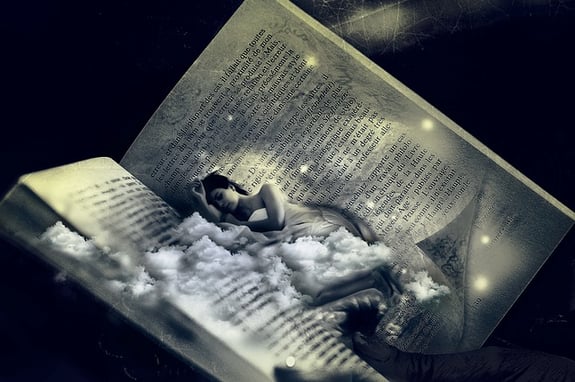
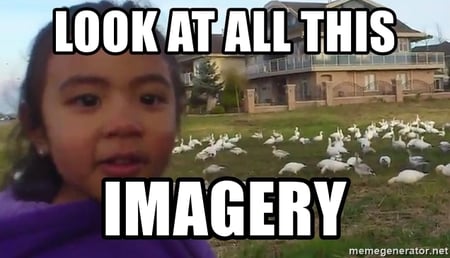 Earnestly. Once you know what you're looking, you'll see information technology everywhere!
Earnestly. Once you know what you're looking, you'll see information technology everywhere! What Is Imagery? Definition and Explanation
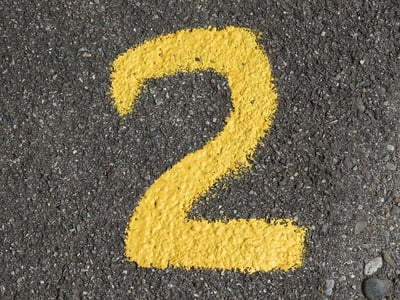
The 2 Types of Imagery
Literal Imagery: Examples and Explanation

Metaphorical Mental imagery: Examples and Explanation
Can an Exemplar of Imagery be Both Literal and Figurative at the Same Time?
When all at formerly I power saw a herd,
A host, of prosperous daffodils;
Beside the lake, at a lower place the trees,
Fluttering and terpsichore in the zephyr.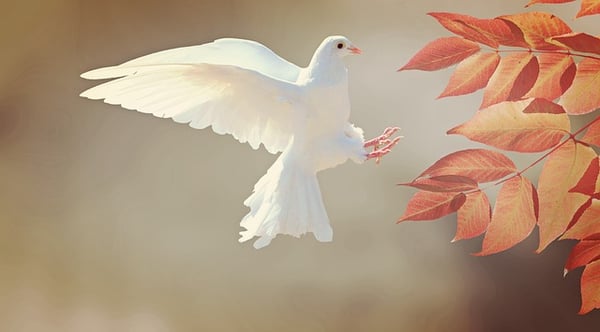
Mental imagery in Poetry: "Promise is the thing with feathers" by Emily Dickinson
And sings the tune up without the words -
And ne'er Michigan - in the least -
And sore must be the storm -
That could abash the little Bird
That kept soh many warm -
And on the strangest Sea -
Yet - never - in Extremity,
It asked a crumb - of me.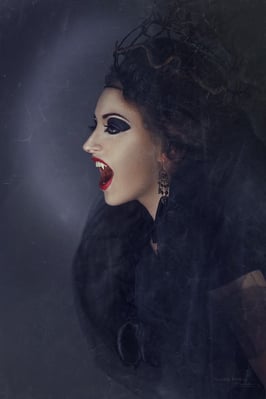
Imagery in Fiction: Genus Dracula away Bram Stoker

3 Questions to Involve When Analyzing Imagery
Question 1: What Did I Imagine Piece I Was Reading?
Question 2: What Does the Imagery Reveal About the Situation?
Interrogation 3: How Does the Imagery Impact the Mood of the Text?

What's Next?

About the Generator
Ashley Sufflé Robinson has a Ph.D. in 19th Century English Literature. As a content writer for PrepScholar, Ashley is passionate about bighearted college-bound students the in-depth information they need to get into the school of their dreams.
Imgery in Where I Lived and What I Lived for
Source: https://blog.prepscholar.com/what-is-imagery-definition-examples
0 Response to "Imgery in Where I Lived and What I Lived for"
Post a Comment